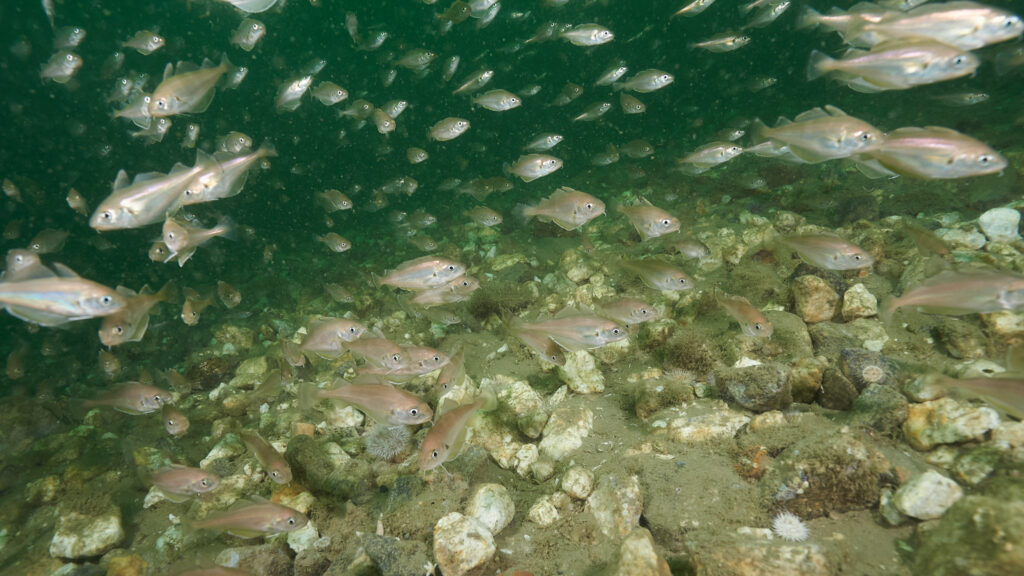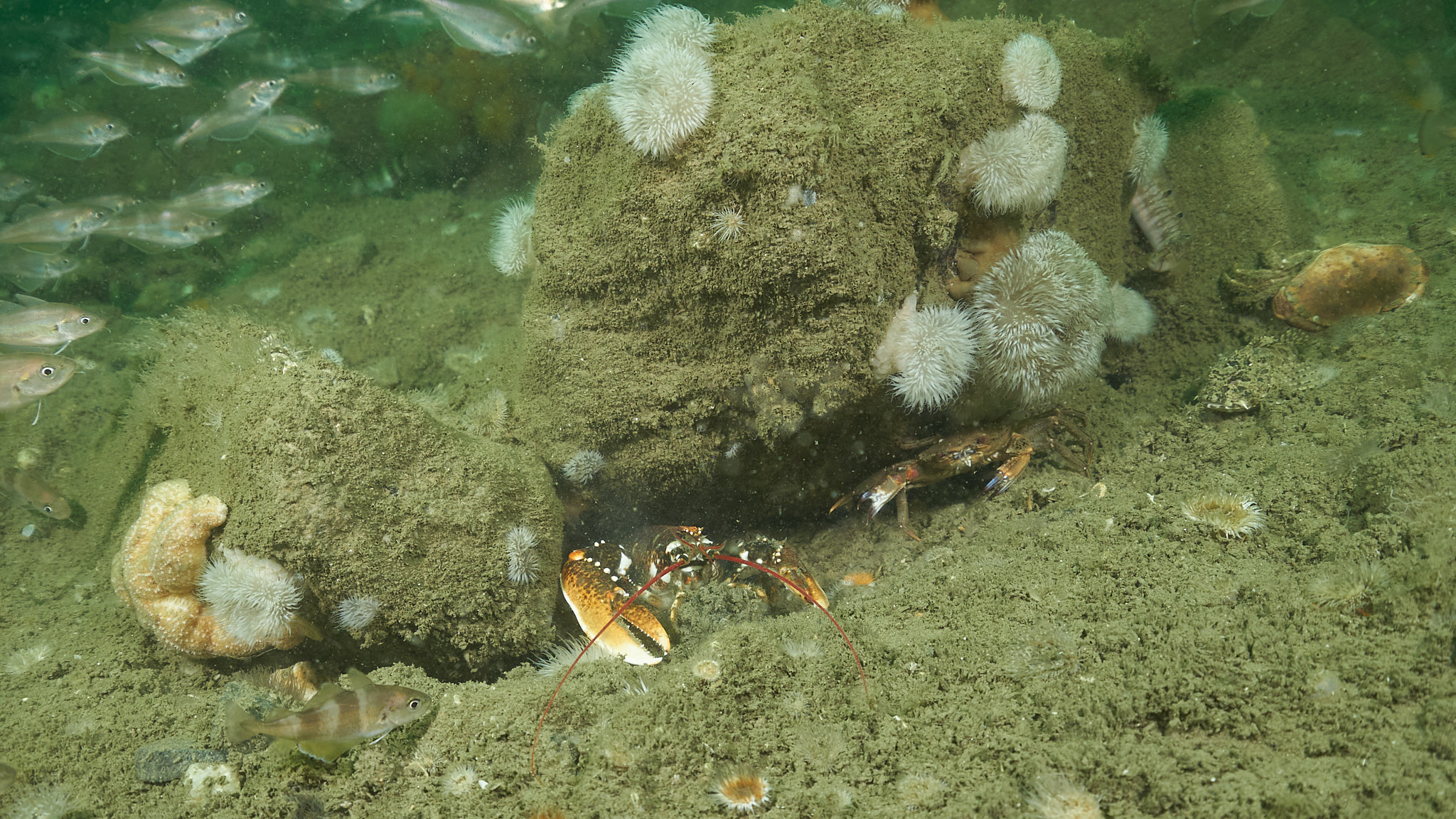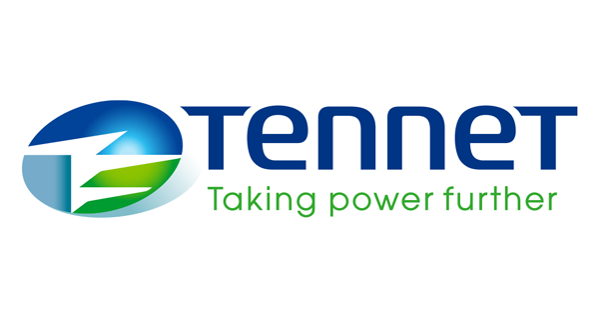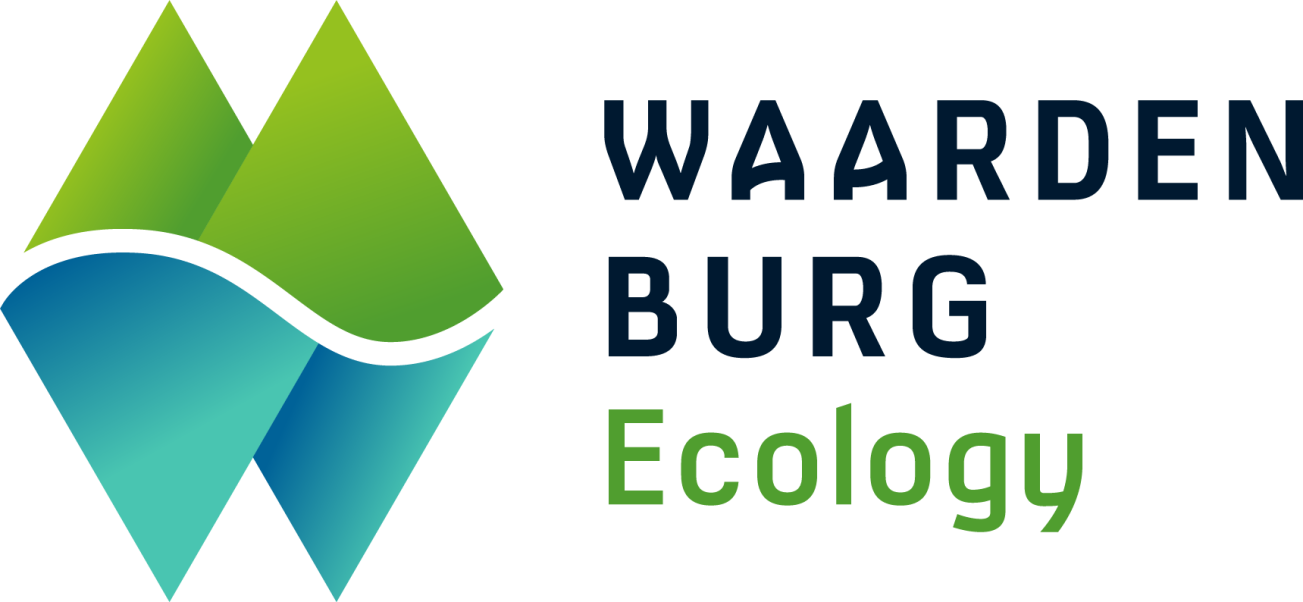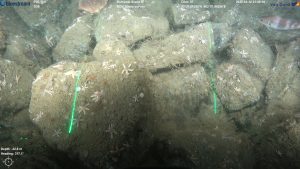TenneT’s installation of cables for Hollandse Kust Zuid offshore wind farm inspired the use of crossings for nature inclusive design. Cable crossings provide hard substrate and connect large areas of sea, which opened an opportunity to develop new marine ecosystems. By replacing traditional layer of granite rock with other calcareous material, TenneT sought to discover whether the new material provided a better settlement substrate to promote habitat complexity. Scientists believed that this may be the case, as oyster larvae like to settle on bivalve reefs which have similar chemical markers to the calcareous material. However, results showed that the size of the stones was more important for habitat development than the material.
Photographs on this page were made by Dutch Maritime Productions.
